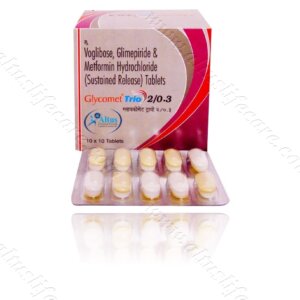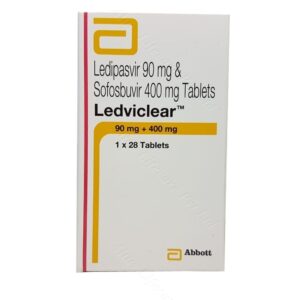- Nephrology Segment
- Kidney / Liver Care
- Anti Cancer
- Altus Product's
- Pharmaceutical Products
- Anti Fungal
- Hepatitis
- Beauty & Skin Care
- Asthma
- Modafinil
- Urology Segment
- Thyroid Care
- Armodafinil
- HIV Medicines
- Weight Loss
- Naltrexone
- Anti Emetic
- Neuropathic Pain
- Mens Health
- Hair Loss
- Pain Relief
- HCG Injections
- Quit Smoking
- Pharmaceutical Vaccine
- Best Selling Products
- Anti Viral
- Bimatoprost
- Antibiotics
- Women's Health
- Cetaphil
- Botulinum
- Diabetes
- Human Albumin
- Anti Malarial
- Dermal fillers
- Chemical Peels
- Anti-Cancer
- Armodafinil
- Bimatoprost
- Botulinum
- Dermal Fillers
- Hepatitis
- Mens-health
- Modafinil
- Naltrexone
- ANTI EMETIC
- Altus Product’s
- Anti Fungal
- Anti Malarial
- Anti Viral
- Antibiotics
- Asthma
- Beauty & Skin Care
- Cetaphil
- Chemical Peels
- Diabetes
- Hair Loss
- HCG Injections
- HIV Medicines
- Human Albumin
- Kidney / Liver Care
- Neuropathic Pain
- Pain Relief
- Pharmaceutical Products
- Pharmaceutical Vaccine
- Quit Smoking
- Thyroid Care
- Weight Loss
- Women’s Health
- Nephrology Segment
- Kidney / Liver Care
- Anti Cancer
- Altus Product's
- Pharmaceutical Products
- Anti Fungal
- Hepatitis
- Beauty & Skin Care
- Asthma
- Modafinil
- Urology Segment
- Thyroid Care
- Armodafinil
- HIV Medicines
- Weight Loss
- Naltrexone
- Anti Emetic
- Neuropathic Pain
- Mens Health
- Hair Loss
- Pain Relief
- HCG Injections
- Quit Smoking
- Pharmaceutical Vaccine
- Best Selling Products
- Anti Viral
- Bimatoprost
- Antibiotics
- Women's Health
- Cetaphil
- Botulinum
- Diabetes
- Human Albumin
- Anti Malarial
- Dermal fillers
- Chemical Peels
No products in the cart.
Return To Shop$52.56 – $146.15Price range: $52.56 through $146.15
Glycomet Trio 2/0.3 Tablet (Glimepiride 2mg / Metformin 500mg / Voglibose 0.3mg)
Glycomet Trio 2/0.3 Tablet SR belongs to a category of medicines known as anti-diabetic drugs. It is a combination of medicines used to treat type 2 diabetes mellitus in adults. It helps control blood sugar levels in people with diabetes.
Have questions?
Call : +91 9002 1002 33
Glycomet Trio 2/0.3 Tablet (Glimepiride 2mg / Metformin 500mg / Voglibose 0.3mg)
| COUNTRY OF ORIGIN | India |
|---|---|
| DOSAGE FORM | Tablets |
| GENERIC NAME | Glimepiride |
| INDICATION | Treatment of Type 2 diabetes mellitus |
| PACKAGING | 10 tablets in 1 strip |
| MANUFACTURER | USV Ltd |
| COMPOSITION | Glimepiride (2mg) + Metformin (500mg) + Voglibose (0.3mg) |
PRODUCT INTRODUCTION
Glycomet Trio 2/0.3 Tablet SR belongs to a category of medicines known as anti-diabetic drugs. It is a combination of medicines used to treat type 2 diabetes mellitus in adults. It helps control blood sugar levels in people with diabetes.
Glycomet Trio 2/0.3 Tablet SR should be taken with food. Take it regularly at the same time each day to get the most benefit. Your doctor will decide what dose is best for you and this may change from time to time according to how it is working according to your blood sugar levels, keep taking this medicine, even if you feel well or your blood sugar levels are controlled. If you stop it without consulting your doctor, your blood sugar levels could rise and put you at risk of kidney damage, blindness, nerve problems and loss of limbs.
Remember that it is only part of a treatment program that should also include a healthy diet, regular exercise, and weight reduction as advised by your doctor. Your lifestyle plays a big part in controlling diabetes.
The most common side effect of Glycomet Trio 2/0.3 Tablet SR is low blood glucose levels (hypoglycemia). Make sure you recognize the signs of having low blood glucose levels, such as sweating, dizziness, headache, and shaking and know how to deal with it. To prevent this, it’s important to have regular meals and always carry a fast-acting source of glucose such as sugary food or fruit juice with you.
Drinking alcohol can also increase your risk of low blood sugar levels and should be avoided. Other side effects that may be seen on taking this medicine include taste changes, nausea, diarrhea, stomach pain, headache, edema (swelling), blurred vision, bone fracture, and upper respiratory tract infection. Some people may find that they put on weight with this medicine.
You should not take it if you have type 1 diabetes mellitus, if you have diabetic ketoacidosis (high levels of acid in your blood), or if you have severe kidney or liver disease.
Before taking this medicine, tell your doctor if you have ever had heart disease. It may not be suitable. Pregnant or breastfeeding women should also consult their doctor before taking it. Your blood sugar levels should be checked regularly and your doctor may also advise blood tests to monitor your blood cell counts and liver function.
“Triad of Glycemic Harmony: Unveiling Glimepiride 2mg, Metformin 500mg, and Voglibose 0.3mg Synergy for Comprehensive Diabetes Management”
This heading emphasizes the comprehensive approach to diabetes management by combining Glimepiride at 2mg, Metformin at 500mg, and Voglibose at 0.3mg. The explanation would delve into the distinct mechanisms of each medication, with Glimepiride stimulating insulin release, Metformin improving insulin sensitivity, and Voglibose inhibiting glucose absorption in the intestines. Together, they form a triad aimed at addressing various aspects of glycemic control for individuals with Type 2 diabetes.
2. “Precision in Triple Dynamics: Navigating Glimepiride 2mg, Metformin 500mg, and Voglibose 0.3mg for Tailored Glycemic Harmony”
Here, the focus is on the precision involved in incorporating Glimepiride at 2mg, Metformin at 500mg, and Voglibose at 0.3mg into a diabetes management plan. The explanation would explore the rationale behind each medication’s dosage, considering their individual mechanisms, and highlight the importance of a carefully calibrated strategy that balances optimal efficacy with individual patient needs. This underscores the significance of a precise approach in achieving successful diabetes control with the triple combination.
Bridging to Better Health: Navigating Glimepiride Metformin Voglibose Combinations
The heading implies that the combination of these medications acts as a bridge, facilitating a path towards improved health in diabetes patients.
Signs and Symptoms of Type 2 Diabetes Mellitus: Interpreting the Onset of Diabetes
Delve into the interpretation of early signs that mark the onset of Type 2 Diabetes Mellitus. Explore the specific symptoms and cues that can be interpreted to understand the initial stages of diabetes and their implications.
Diabetes Mellitus Medications: Unlocking the Power of Medications for Health
Unlock the transformative power of medications to promote health in diabetes care. This guide emphasizes the potential of medications in unlocking better health outcomes, contributing to improved well-being and overall health.
Pioneering Progress: Drug for Diabetes Mellitus Type 2 Chronicles
Pioneering advancements in Diabetes Mellitus Type 2 care, this exploration delves into the drug’s status as a trailblazer, contributing to the progress and evolution of medical solutions for the condition.
“Meds for Diabetes Mellitus Type 2: Medication Choices for a Healthier Future”
Explore medication choices that pave the way for a healthier future in Type 2 Diabetes management. This guide delves into the long-term considerations of medication selection, fostering a proactive approach to securing a healthier future for individuals with diabetes.
Medications for Diabetes Mellitus Type 2: Medication Considerations in Transitions of Care
Transitions of care require thoughtful medication considerations. Join us in this blog as we discuss strategies for managing medications during transitions of care, ensuring continuity and effectiveness in type 2 diabetes management.
Advancements in Beta-Cell Replacement Therapies for Treatment of Type 2 Diabetes Mellitus
Highlighting innovative approaches, this section explores advancements in beta-cell replacement therapies for the treatment of Type 2 Diabetes Mellitus. From stem cell-based strategies to artificial pancreas development, the discussion showcases emerging technologies that aim to restore beta-cell function and improve glycemic control.
DM Type 2 Medications: Navigating Medication Choices for Improved Health
Navigate through various medication choices designed to improve health outcomes for individuals managing Type 2 Diabetes. Explore how these choices positively impact health and contribute to overall well-being.
USES OF GLYCOMET TRIO TABLET SR
- Treatment of Type 2 diabetes mellitus
BENEFITS OF GLYCOMET TRIO TABLET SR
In Treatment of Type 2 diabetes mellitus
Glycomet Trio 2/0.3 Tablet SR will reduce the risk of dying from cardiovascular disease if you have type 2 diabetes and already have cardiovascular disease. Taking this medicine regularly along with proper diet and exercise will help you live a normal, healthy life. You should keep using it for as long as it is prescribed because it is protecting your future health.
SIDE EFFECTS OF GLYCOMET TRIO TABLET SR
Common side effects of Glycomet Trio
- Nausea
- Diarrhea
- Abdominal pain
- Hypoglycemia (low blood glucose level)
HOW TO USE GLYCOMET TRIO TABLET SR
HOW GLYCOMET TRIO TABLET SR WORKS
SAFETY ADVICE

Alcohol

Pregnancy

Breast feeding

Driving

Kidney
Use of Glycomet Trio 2/0.3 Tablet SR is, however, not recommended in patients with severe kidney disease.

Liver
Glycomet Trio 2/0.3 Tablet SR is generally started with low dose in patients with mild to moderate liver disease and its use is not recommended in patients with severe liver disease.
WHAT IF YOU FORGET TO TAKE GLYCOMET TRIO TABLET SR?
| Pack Size | 100 Tablet/s, 200 Tablet/s, 300 Tablet/s, 400 Tablet/s |
|---|
3 reviews for Glycomet Trio 2/0.3 Tablet
Related products
Daunotec 20mg Injection | Daunorubicin
From: $54.55Armotraz Tablet (Anastrozole 1mg)
From: $97.40Citafine 1400mg Injection (Gemcitabine)
From: $110.39Bevatas Injection (Bevacizumab)
From: $145.45Ledviclear Tablets | Ledipasvir | Sofosbuvir
From: $243.59Sofab LP Tablet | Ledipasvir | Sofosbuvir
From: $256.41Hepcvir Tablet | Sofosbuvir 400mg
From: $153.85People also bought
-

Benoquin 40 Cream | Monobenzone 40%
From: $154.77 -
 From: $38.38
From: $38.38 -
 From: $40.05
From: $40.05 -

Aziderm 10% Cream 15gm | Azelaic Acid 10%
From: $39.26
Our Services
Shipping
Shipping at Discounted Price
Money Returns
Return Within 30 Days
Secure Payment
Safe & Secure Payment
Support 24/7
Contact 24 Hours Day
From: $53.85


From: $47.44
- Anti-Cancer
- Armodafinil
- Bimatoprost
- Botulinum
- Dermal Fillers
- Hepatitis
- Mens-health
- Modafinil
- Naltrexone
- ANTI EMETIC
- Altus Product’s
- Anti Fungal
- Anti Malarial
- Anti Viral
- Antibiotics
- Asthma
- Beauty & Skin Care
- Cetaphil
- Chemical Peels
- Diabetes
- Hair Loss
- HCG Injections
- HIV Medicines
- Human Albumin
- Kidney / Liver Care
- Neuropathic Pain
- Pain Relief
- Pharmaceutical Products
- Pharmaceutical Vaccine
- Quit Smoking
- Thyroid Care
- Weight Loss
- Women’s Health













Zaria (verified owner) –
“I was impressed by the sturdy packaging, which protected the product during transit. The quality is excellent as well!”
Oakleigh (verified owner) –
“Five stars for both the fantastic product quality and speedy shipping!”
Miriam (verified owner) –
The flexibility to adapt my physical activity routine has added variety and excitement to my type 2 diabetes management.